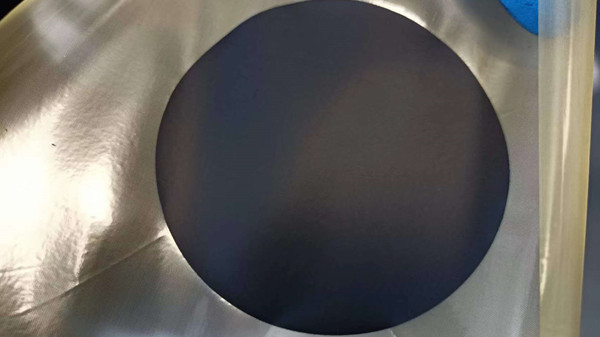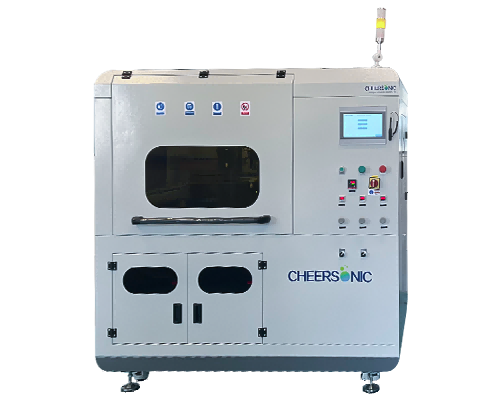Ultrasonic Spraying of Anion Exchange Membrane
Ultrasonic spraying helps anion exchange membrane and promotes energy innovation
In the global energy landscape, the energy crisis is like a sword of Damocles hanging high, which seriously restricts the development of the national economy. Since the last century, most industrial and transportation sectors have been overly dependent on fossil fuels, which is precisely the “culprit” of greenhouse gas emissions. In order to break this dilemma and implement a zero-carbon emission strategy, it is urgent to vigorously develop renewable energy technologies such as solar energy, wind energy, and geothermal energy.
However, the uneven distribution of natural resources has set many obstacles to the large-scale use of renewable energy. In this context, it is urgent to develop ideal energy carrier technology. Such technologies need to have the ability to easily store energy and can be widely used in energy production links in multiple fields such as transportation, industry, space, and housing. Hydrogen technology has been favored and widely adopted by developed countries in the past few decades because of its potential to achieve zero carbon emissions.
However, hydrogen was previously produced from fossil fuels such as natural gas, and this type of “grey hydrogen” will release a large amount of carbon dioxide into the environment during the production process. In short, the production of hydrogen based on fossil fuels not only produces harmful gases such as carbon dioxide, which seriously damages the ecological environment, but also produces hydrogen with low purity. Therefore, the development of technologies for producing “green hydrogen” using renewable resources has become a top priority in the energy field.
In order to achieve the goals of green economy and zero carbon emissions, technologies based on water electrolysis are seen as a very promising solution. Hydrogen can be generated by water electrolysis by applying direct current to an electrolysis device equipped with selective anodes and cathodes. This type of electrolysis device is called an electrolyzer. According to the membrane material used, electrolyzers are mainly divided into three categories: proton exchange membrane electrolyzers (PEM), anion exchange membrane electrolyzers (AEM), and solid oxide membrane electrolyzers (SOEC).
Unlike PEM and SOEC, AEM uses low-cost stainless steel plates as bipolar plates and uses transition metal-based catalysts, making it a cost-effective technology. However, in the process of improving the performance of AEM, there are still many challenges, among which the stability of membranes and catalysts in highly alkaline environments is particularly prominent.
Anion exchange membranes (AEMs) play an irreplaceable and critical role in anion transport, isolating cathode and anode, and preventing hydrogen and oxygen cross-talk to improve the purity of generated gas. The development of anion exchange membranes with high ionic conductivity, excellent mechanical properties, thermal stability, and chemical stability is of great significance to significantly improve the overall performance and life of AEMWEs, and help them play a more critical role in sustainable energy solutions.
Many studies have focused on the manufacture of anion exchange membranes (AEMs) or cationic polymer membranes (CPMs), which can selectively allow negatively charged hydroxide ions to pass through. Based on these studies, AEMs can be divided into two categories: (i) AEMs containing aromatic ethers and (ii) AEMs without aromatic ethers.
In ether-based AEMs, electron-attracting groups such as perfluorinated groups, sulfonyl groups, and carbonyl groups are more common. These groups weaken the stability of the ether bond and are easily the main targets of nucleophilic attack under alkaline conditions, which leads to rapid degradation of the ether bond and greatly reduces the durability of the AEM.
AEMs without aromatic ethers include AEMs based on polyolefins (such as polyphenylene, polyethylene, and polystyrene), poly(aryl piperidines) (PAPs), poly(benzimidazoles) (PBIs), poly(phenylene alkyl) (PPA), and Troger’s base (TB) polymers. The rich structural diversity of these polymers determines the final performance of the membrane, including ion exchange capacity (IEC), ionic conductivity (IC), water uptake capacity (WUC), and chemical thermal stability.
In addition, the availability of synthetic routes and reagents also plays an important role in the preparation of membrane materials. For example, when synthesizing polyolefins (POs), polyphenylene (PPs), and their copolymers with fluorinated monomers, multiple intermediate steps or subsequent correction steps are often required, and the scarcity of commercial reagents leads to high costs, which greatly limits large-scale production.
Due to the presence of a large amount of polycyclic aromatic hydrocarbons in these polymers, the formed membranes are relatively rigid and have a low molecular weight. Therefore, the water uptake capacity, ion exchange capacity, and ionic conductivity of these polymers are low, and the performance is poor. In terms of chemical stability, polyphenylene (PPs) contains quaternary ammonium nitrogen atoms as side chains with only one carbon atom next to the nitrogen atom, which makes it more stable than other polymers in alkaline environments. However, polymers with longer carbon chains (up to 2 to 6 carbon atoms) have poor chemical stability and are far less stable than quaternary ammonium nitrogen containing a single carbon atom.
On the other hand, although PBI polymers have excellent mechanical properties, chemical stability and thermal stability, their performance in alkaline media is unsatisfactory due to their low water absorption capacity (WUC) and ionic conductivity (IC). In addition, the reagents used in the synthesis of PBI are relatively expensive, which also weakens its selection advantage over other polymers.
At present, AEMs based on poly (aryl piperidines) (PAPs) have attracted much attention in recent years due to their wide range of monomer sources, diverse structures, and the ability to achieve variable physical properties by changing monomers. The product has been mass-produced and commercially applied. The chemical life of this type of AEM membrane has exceeded 60,000 hours after accelerated aging experiments, and is still growing.
In contrast, TB polymers are a class of multifunctional polymers, which are unique in that they form a fusion structure between two aromatic rings through nitrogen atoms. Due to the combination of two nitrogen atoms, special gaps or channels are formed, allowing hydroxide ions to move freely in them, thereby significantly improving the ion exchange capacity (IEC), ionic conductivity (IC) and water absorption capacity (WUC). After modification, these polymers have much better mechanical properties than long-chain polymers. Since there are no β-hydrogen atoms in the TB polymer structure, it can effectively resist nucleophilic attacks and its alkaline stability is greatly improved.
In the preparation of anion exchange membranes, ultrasonic spraying technology has shown many unique advantages. Ultrasonic spraying technology can accurately control the coating thickness to ensure uniform performance of the membrane. Compared with traditional spraying methods, it can achieve thinner and more uniform coatings, which is crucial to improving the ion transport efficiency of anion exchange membranes. For example, when preparing AEMs based on different polymers, ultrasonic spraying can accurately spray functional materials on the surface or specific locations inside the membrane, optimize the microstructure of the membrane, and thus improve the overall performance of the membrane.
At the same time, ultrasonic spraying technology can improve the utilization rate of materials. In traditional spraying, a large amount of material will be wasted due to splashing and other reasons, while ultrasonic spraying uses high-frequency vibration to make the paint atomization finer, which can more effectively spray the material to the target position, reduce waste and reduce production costs. This advantage is particularly significant for the large-scale production of AEM, which helps to improve production efficiency and promote the widespread application of anion exchange membranes in the energy field.
In addition, ultrasonic spraying technology can also improve the bonding force between the membrane and the catalyst. In AEM, the stable adhesion of the catalyst is critical to improving the electrolysis efficiency. Ultrasonic spraying can make the catalyst more evenly dispersed and firmly attached to the membrane surface, enhance the interaction between the two, thereby improving the activity and stability of the catalyst, and further improving the performance of AEM in a highly alkaline environment.
In summary, ultrasonic spraying technology has important application value in the preparation of anion exchange membranes, and can contribute to improving the performance of AEM and promoting green development in the energy field.
About Cheersonic
Cheersonic is the leading developer and manufacturer of ultrasonic coating systems for applying precise, thin film coatings to protect, strengthen or smooth surfaces on parts and components for the microelectronics/electronics, alternative energy, medical and industrial markets, including specialized glass applications in construction and automotive.
Our coating solutions are environmentally-friendly, efficient and highly reliable, and enable dramatic reductions in overspray, savings in raw material, water and energy usage and provide improved process repeatability, transfer efficiency, high uniformity and reduced emissions.
Chinese Website: Cheersonic Provides Professional Coating Solutions



